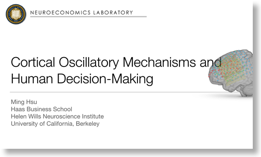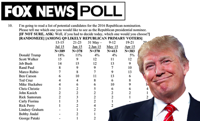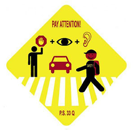The Drake Equation
But this is just an excuse to talk about my favorite equation—the Drake Equation. And by “favorite" I mostly mean it is underrated and deserving of more praise, like how one would talk about an obscure “favorite” athlete or book. Because really, favorite equation?!
Part of what I like about the Drake Equation is its seeming absurdity at first glance. It is "a probabilistic argument used to arrive at an estimate of the number of active, communicative extraterrestrial civilizations in the Milky Way galaxy.”

On top of being about something quite out there (oh!), it also not actually all that practically useful. Recently in an In Our Time podcast about extremophiles and astrobiology, one of the guests described in the equation in the most delightful way, that, “The number N depends on
- The average number of planets that potentially support life, which WE DO NOT KNOW.
- The fraction that develop life at some points, which WE DO NOT KNOW.
- The fraction that develop intelligent life, which WE DO NOT KNOW.
- The fraction releasing detectable signs into space, which WE DO NOT KNOW.
- And the length of time releasing detectable signals, which WE DO NOT KNOW.”
But far from being a failure, it has in fact been incredibly influential. Why? Because it breaks up a daunting problem into more manageable pieces, some more manageable than others. A generation ago, we did not know the average rate of star formation, or the fraction with planets, but now we have decent ideas of those. And one can imagine that we will either find out what some of the other terms are, or break those into manageable problems that we can solve.
Simply put, the Drake Equation provides the scientific community with a strategy to make systematic progress on a difficult question. More than difficult in fact, on what is an impossible question to address with current technology.
So when I hear blanket criticisms of applying basic sciences to business or societal problems, I take heart in the fact that Frank Drake and his coauthors were able to provide a sensible scientific framework for such a seemingly absurd question.
Upcoming Talk Schedules at Peking University

Time: 15Dec. 13:00 - 15:00pm
Location: Room 1113, Wangkezhen Building
Title
: Oscillatory mechanisms underlying decision-making under uncertaintyAbstract
: Despite tremendous recent progress in elucidating core neurocomputational components that underlie economic decision-making, we still know little about the mechanisms that coordinate the various signals within and across various brain regions. Here I will discuss results from recent electrocorticography (ECoG) studies suggesting a fundamental role of neural oscillations in governing intra- and inter-regional communication during decision-making. Specifically, we recorded local field potentials in the prefrontal cortex of in neurosurgical patients who were engaged in a gambling task. ECoG signals reflect the coordinated activity of ensembles of hundreds of thousands of neurons, and are uniquely poised to reveal fast, circuit-level computations in the human brain. We found that different aspects of the gambling game generated event-related changes in oscillatory activity across multiple areas and frequency bands. Furthermore, oscillatory interactions between lateral and orbital prefrontal regions support cognitive processes underlying decision-making under uncertainty. Together, these data highlight the importance of network dynamics in characterizing neural basis of economic decision-making.
Time: 16.Dec. 13:30-15:00pm
Location: Room217, Guanghua Building 2
Title
: Inside The Mind of the Consumer: Thoughts, Feelings, and ExperiencesAbstract
: Researchers and practitioners have long relied on self-report methods to understand how consumers evaluate, choose, and experience different product offerings. These methods, however, have remained largely unchanged since their introduction decades ago and have a number of well-known limitations. As a result, there is growing interest in brain-based approaches that may enable consumer researchers and managers to directly probe customers’ underlying thoughts, feelings, and experiences. Here I will describe recent progress and open questions in using such methods in understanding customer mindsets.What do Donald Trump and gay marriage have in common?


Here’s another. In both cases, everyone has a story about why that is. In Trump’s case, one I particularly enjoy is that voters are using their stated support for him to air grievances about their larger dissatisfaction, almost kind of like punishing yourself after a bad breakup.
In gay marriage, the thinking among some people is that there is a social desirability bias against opposing gay marriage.
Here’s the final one. In both cases, the stories given are quite precise and plausible (to me at least), but unfortunately neither has much support in terms of actual evidence.
Early Career Award
2015 Society for Neuroeconomics Conference

So it was great to be back at Neuroecon after a 2 year absence due to teaching conflicts. Here are some broader trends that I found particularly exciting:
- Animal models of “stuff that we used to think of as special to humans”. Not long ago, it seems that any discussions of animal cognition and behavior begins and ends with a defensive remark about the dangers of anthropomorphizing. By looking into the neural and molecular mechanisms, we can start critically test those tantalizing analogies that come out of surface similarities. We now sophisticated talks about prosocial behavior in monkeys and rodents, monkeys doing the marshmallow test, and (no joke, in all the good ways) a rodent stock market(!).

- Attention and decision-making. Someone recently mentioned that the most valuable commodity in the modern economy is your attention. But understanding how attention influences decision-making has proven incredibly challenging. So it’s exciting to see a number of talks and posters on this topic. There’s probably no better time in history to be studying these questions.

1An amusing exception to this comes from a LinkedIn comment in response to a neuromarketing article that goes something like, “The brain is so yesterday. Why don’t you write about microbiomes instead? That’s where the exciting stuff is at!” With friends like this, who needs enemies!
Trust but Verify? But…how?
Researchers at UC Berkeley’s Haas School of Business are using functional magnetic resonance imaging (fMRI) to see if what people say about brands matches what they are actually thinking.“Surveys and focus groups are the work-horses for generating customer insights. They are fast, inexpensive, and offer tremendous value for marketers,” explains Hsu, who served as senior author of the study, “However, the inherent subjectivity of these measures can sometimes generate skepticism and confusion within companies, often leading to difficult conversations between managers within marketing and those outside.”
“We were able to predict participants’ survey responses solely from their brain activity,” says Chen. “That is, rather than taking participants’ word at face value, we can look to their neural signatures for validation.”
Although conducting fMRI studies on a routine basis is still likely to be cost prohibitive for most companies, the current findings point to a future where marketers can directly validate customer insights in ways that were not possible before.
[Full release] [Full Study]